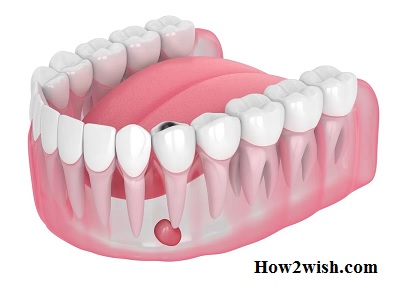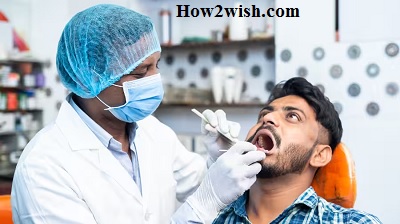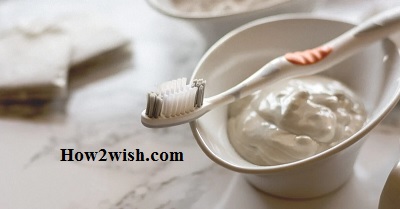One of the symptoms of inflammatory lesions of the gum tissue is the formation of an abscess. A similar situation requires prompt medical intervention since with a prolonged course there is a possibility of developing a gum abscess. In addition, an inflamed infiltrate is usually a sign of more serious diseases, including those that go beyond the scope of the dental discipline. Timely and high-quality diagnostics carried out in a clinical setting provide the information necessary for the correct choice of a treatment plan. Why does pus appear in the gums, what to do with an unpleasant odor, and how to treat inflammation, when you press on a purulent pimple above the tooth, blood is released from the sac and exudate comes out, and severe pain is also felt. Let’s figure it out.

General view
The pathological process is based on an infectious origin. The inflamed condition is the result of the accumulation of small food particles in the periodontal pockets, which gradually decompose and begin to release toxic elements. The number of dead microbes and immune cells is constantly increasing – as soon as the pathology affects deep tissues, an abscess forms.
The human body makes active attempts to protect itself and clear the problem area. The spread of pathogenic bacteria stimulates blood circulation, due to which cellular transport occurs faster. As a result, pus accumulates on the upper or lower gums, forming a purulent sac. The problem area gradually becomes more and more extensive, covers the area of the periosteum, and provokes swelling of the mucous surface in the oral cavity. The inner side of the cheeks and the gum line acquire a characteristic bright red hue. Ultimately, a fistula is formed on the least durable area, through which the exudate is arbitrarily removed from the infectious focus.
Gum Abscess Symptoms
Among the signs indicating a pathological condition caused by infection of the mucosa, first of all, are the pain and discomfort that accompany the daily meal. In addition, it is noted:
- The appearance of a taste of bitterness.
- Exacerbation of reaction to temperature changes.
- Attacks of acute throbbing pain.
- Violation of facial symmetry.
- Discomfort on palpation.
- Swelling of mucous tissue.
- The smell from the mouth.
- Discharge under pressure.
The duration and effectiveness of the treatment of purulent inflammation of the gums largely depend on the timeliness of treatment. The presence of a fistula confirms the development of the pathological process. The element of the dentition, located in close proximity to the abscess, is usually covered with plaque or is affected by caries more than others. Ignoring clinical symptoms causes more serious negative consequences, so at the first signs it is worth undergoing a preliminary diagnosis – this will help determine the form and degree of pathology.
Types of dental abscess
Bacteria penetrate the structure through the bloodstream, or against the background of existing mechanical damage and injuries. If pus has accumulated in the gum, and it is noticeably swollen, it means that an abscess has formed. As soon as the abscess matures, the mucous membrane acquires a characteristic bluish tint, and a swollen spot with a white dot in the center is formed. Violation of integrity leads to the opening of the fistula.
In dentistry, there are several possible types of abscess:
- Gingival – localized in the area of soft tissue and interdental papillae, caused by the ingress of food residues and mechanical damage. Successfully treated with timely diagnosis.
- Periapical – a consequence of not completing the course of treatment of caries or periodontitis. The entry of infection into the root system causes the accumulation of fluid in the region of the root apex. Against the background of a decrease in immunity, it can be the cause of extensive damage to the periosteum and mucosa.
- Periodontal – the development of accumulation with pus under the tooth in the gum, the treatment of which requires surgical opening of the problem area. The absence of a cavity channel through which the contents could come out naturally leads to the defeat of adjacent areas.
- Pericoronal – a pathology most often diagnosed with problems with an erupting dentition. Foreign elements appear under the gingival structure and accumulate above the crown, due to which the tissue swells and becomes painfully susceptible to external influences. Potential associated complications are cervical edema, angina pectoris, and so on.
- Periodontal-endodontic – characterized by infectious damage and increases the likelihood of severe periodontitis.
The type of abscess determines the choice in favor of one or another treatment method, however, in order to form a more detailed clinical picture, it is also necessary to determine the source of the problem.

Why did pus appear on the gum?
Practice shows that in most cases the main factor is insufficient care, ignoring basic recommendations, as well as a careless attitude to hygiene. The less often the patient visits the dentist for a preventive examination, the higher the likelihood of pathology. Often, the infiltrate is formed against the background of minor mechanical damage caused by cuts, injuries, wearing orthodontic structures, or prostheses that do not match in size. Constant exposure to the mucous membrane leads to irritation, provokes inflammation, and, as a result, causes a transition to a more serious condition.
Purulent abscess with periodontitis
In situations where the cavity with exudate is localized in the region of the root tip of the tooth, there is a possibility of flux spreading to adjacent units. The affected area becomes edematous and susceptible to contact, and deposits begin to accumulate in the pockets between the gum tissue and the root surface, triggering the inflammatory process. What to do if a tooth hurts, the gums are swollen and inflamed, pus is squeezed out of the bag between them and blood flows? The answer is obvious – contact the dental clinic without delay.
Presence of injury
Among the factors provoking damage to the structure of the mucosa to include:
- Improper handling of personal hygiene items – brush, toothpicks, threads.
- Violation of the protocol for the installation of an artificial crown, implant, or veneer.
- The destruction of tooth enamel leads to the formation of sharp edges.
- An external impact is caused by a sharp impact, collision, or another contact.
Given the vulnerability of the jaw section, as well as the danger of prolonged suppuration, it is important to strictly follow medical prescriptions. Otherwise, there is a possibility of the development of phlegmon, a breakthrough of the cyst, and the spread of infection to adjacent tissues.
What to do if pus comes from the gums
Attempts to self-medicate do not affect health in a positive way, so it is better to refrain from dubious alternatives to full-fledged treatment. If we talk about recommendations in the period between identifying signs of an abscess and visiting dentistry, then there are the following points:
- Refusal of warming procedures and compresses.
- The use of ice as a means to relieve pain.
- Refraining from trying to open the abscess on your own.
Even a small abscess can cause serious problems with teeth and periodontal tissues. Ignoring the symptoms for a long time is a potential cause of the destruction of the pulp and the development of decay processes in the periosteum. A course with the use of antibiotics and antibacterial drugs prescribed on the basis of medical indications helps to stop the cycle that has already begun.
Silvering teeth: Why Silver them for a child, Side Effects and Oral hygiene
How is gum Abscess treatment done?
The initial stage involves the removal of accumulated plaque and stony deposits. This means that local therapy help to localize and temporarily stop the problem, however, the inflammation continues to proceed in a latent form, gradually increasing the volume of periodontal pockets and destroying the bone tissue surrounding the abscess.
An autopsy is a surgical operation that should be performed by a qualified specialist in a clinical setting. The procedure involves the use of an infiltration anesthetic, solutions for antiseptic treatment, as well as the installation of drainage, which excludes early overgrowth of the cavity and provides a directed removal of its contents.
Dental Therapy
Experienced doctors know what pus looks like in the gums, how to remove exudate from under the tissue without pain, and how to understand that a slight redness or swelling on the surface is actually a potential source of big health problems. Based on the results of the diagnosis, an appropriate method of treatment is determined, depending on the degree of development of the pathological condition.
The conservative approach is lengthy and includes a physical examination, history taking, oral hygiene, and the use of anti-inflammatories. The surgical method saves time but involves the excision and installation of a drainage system. In cases where discomfort and pain occur for no apparent reason, surgery may be deeper and accompanied by the temporary removal of the filling or prosthesis, followed by replacement after the problem area has completely healed.
Additional procedures
Various forms of physiotherapy, including electrophoresis, laser treatment, and ultrasound, are used as ancillary techniques also recommended for recovery. In the presence of positive dynamics, it is allowed to remove some of the restrictions. Compliance with the prescriptions helps to reduce discomfort, eliminate swelling and pain, and improve the patient’s overall well-being.
Rehabilitation
Having decided on the question of how to treat the gums if purulent abscesses have appeared, one should not forget about the recovery period, since surgical intervention inevitably turns out to be stressful for the body. To help speed up the healing process:
- Compliance with medical recommendations.
- Timely intake of prescribed drugs.
- Reduction of stress load.
- Make adjustments to your daily diet.
- Quit smoking and alcohol.
- Strict implementation of the schedule of hygiene procedures.
The more carefully the recommendations are followed, the higher the likelihood of a faster return to normal.
gum Abscess treatment at home
Speaking about what to do if the gums are swollen, the abscess has burst, and pus is coming, the only advice may be to turn to professionals. Specialists of dental clinics “Dentika” will select the optimal time of admission in urgent situations and tell you how to stop negative symptoms for the period between the application and the visit to the doctor. However, practice shows that if the pathology is detected at an early stage and does not yet cause significant problems, many people prefer to postpone the visit “until worse times” or eliminate it on their own, guided by considerations of economy or fear.

Folk remedies
The effectiveness of the methods that are given in the collections of ancient recipes is usually determined by the medicinal properties of the plant components used to prepare the infusions. Such self-treatment can really help to temporarily stop local symptoms – for example, rinsing with a solution of soda or chamomile decoction helps to reduce the intensity of pain and alleviate inflammation. However, these drugs do not completely eliminate the pathological condition – just as analgesics do not relieve the source of pain – but only block the sensitivity of receptors for a while.
Why It’s Better to See a Dentist Right Away
Some people, having discovered purulent inflammation, prefer to be treated on their own. But neglect and ignoring the problem can lead to irreparable consequences and increase the risk of complications.
In the absence of competent medical intervention, the disease will lead to severe loosening, tooth loss, bleeding, sepsis, and periostitis. The latter is a more dangerous phenomenon since there is a high risk of a phlegmon of the jaw and death.
Prevention
To exclude the possibility of the influence of negative external factors that can provoke the formation of flux, it is enough to adhere to standard recommendations for oral care. Personal hygiene is an important aspect of maintaining healthy teeth and gums, so doctors advise:
- Use brushes with medium bristles.
- Regularly – at the end of each diet – use rinse aid.
- Use dental floss periodically.
- Get rid of the habit of chewing on hard objects.
Excessive passion for toothpicks can cause damage to the mucosa. As a result, the formation of a small and visually imperceptible area opens access to infection.
To remove plaque and stony deposits that accumulate in the periodontal pockets and hard-to-reach areas of the jaw region, it is recommended to undergo a professional cleaning procedure at least once every six months. Ultrasonication eliminates direct contact that can cause injury and ensures that the desired result is achieved in the form of healthy and snow-white teeth.
More fresh produce should be included in the daily menu. Vegetables and fruits, be they apples, pears, carrots, or cabbage, help to clean the enamel coating of the teeth and strengthen the root structure due to an evenly distributed chewing load. But with seeds and nuts that have a hard shell, you should be careful, because the habit of cracking the outer layer can cause damage to both enamel and gum tissue.
Summing up
So, now you know if there can be pus in the gums, what is the name of this condition, and what to do if there are characteristic symptoms. Practice shows that the disease is more often diagnosed in patients who do not pay enough attention to oral care. Pathogenic microorganisms easily find loopholes in cracks and wounds, provoking the development of inflammatory processes and causing painful sensations that increase with stress. Given the rapid pace of the course of the pathological condition, you should seek qualified medical help at the first sign – this will help to avoid serious problems in the future and keep your smile healthy and attractive.